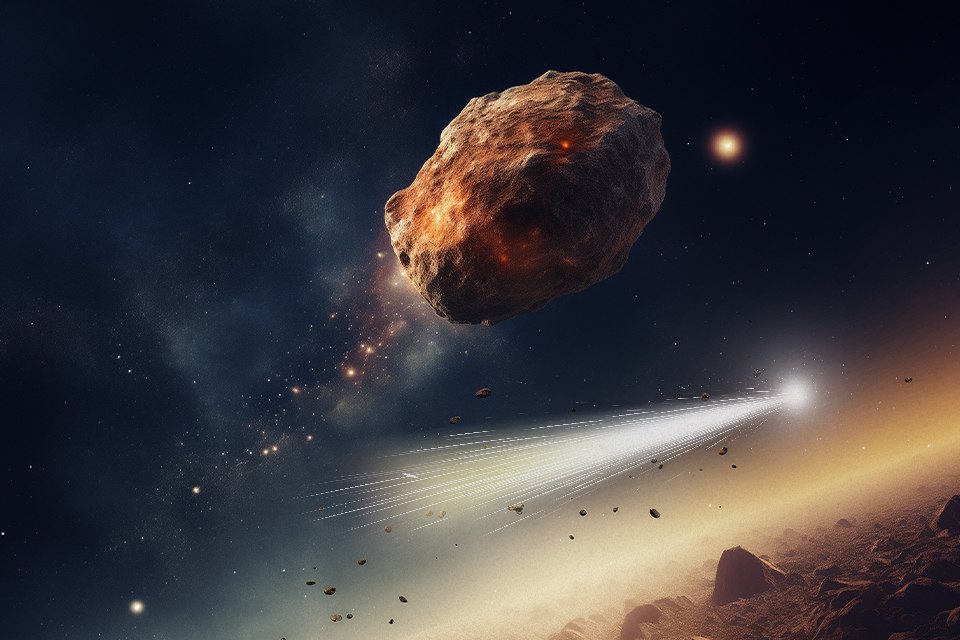Astronomers often tell us that an object in the Solar System is an asteroid or a comet. For ordinary citizens, these are two completely different types of celestial bodies. But scientists really often can’t decide where the border lies between them. So let’s figure out what’s the problem here.

1. What do asteroids and comets have in common?
Everyone knows that an asteroid is a space rock that usually flies somewhere far away. And a comet is a star with a tail. However, in fact, there are more similarities between them than differences. Both belong to the small bodies of the Solar System. These are solid objects which are measured in kilometres, that is, they are hundreds or even thousands of times smaller than any of the major planets.
Both comets and asteroids move in their own orbits, which can change over millions of years depending on how they are affected by the gravity of large bodies.
2. Are the orbits of asteroids and comets different?
It is generally believed that comets move in elongated ellipses, sometimes approaching the Sun, then moving away from it. Asteroids are circling in the Main Belt, so their orbits are not so elongated. But this is not quite true.
In fact, even among asteroids there are objects with rather eccentric orbits, resembling the trajectories of some comets that do not fly away from the Sun much further than the orbit of Jupiter. In addition, it is believed that most comet-like bodies are located in the Oort Cloud and never approach the Sun. The orbits of such bodies may be close to circular.
3. Does the chemical composition of these objects differ?
The opinion that comets mainly consist of ice, and asteroids are made of rock and metals, is also mostly erroneous. The chemical and phase composition of asteroids can vary greatly from one body to another. The same can be said about comets. On the one hand, there are many “giant snowballs” among them, heavily contaminated with silicates. On the other hand, some asteroids may contain ice and frozen gases. Some of them are generally “piles of rubble” — a pile of individual pebbles, not connected by almost anything except weak gravity.
When an object, a significant part of which consists of volatile substances, approaches the Sun, they begin to evaporate. Together with the gases released from it, small pebbles can also come off. All this forms a “tail” that can occur both in comets and in bodies that are usually referred to as asteroids. Therefore, there is really no clear boundary between the two types of objects.
4. Are the consequences of the collision of the Earth with an asteroid and a comet different?
Theoretically, the collision of the Earth with a comet is less dangerous than with an asteroid. The reason is that cometary nuclei usually consist mainly of frozen gases. Such an object is likely to explode at high altitude, unable to withstand air resistance. And the destruction will be significantly less than from an asteroid of the same mass. Because a body consisting of silicates, iron and nickel has every chance of reaching the earth’s surface.
In practice, it is much more important the speed and angle at which a dangerous object is approaching us than what it consists of. And in this regard, comets are no different from asteroids. The main parameter on which the severity of the consequences depends is the size. If it is measured not in tens and hundreds of metres, but in kilometres, then everything described above about the atmosphere is practically irrelevant. Comets and asteroids of this size are equally dangerous.
5. How big can comets be?
The question of how big they can be is connected with the danger of comets. Regarding asteroids, we know for sure that their size reaches tens and hundreds of kilometres, and the largest of them have even been classified as dwarf planets.
Concerning comets, not so long ago, it was believed that their maximum size could reach several tens of kilometres. After all, it is easier for large objects to keep gases from scattering in space, and they are much more common in eccentric orbits. However, in 2021, a Bernardinelli-Bernstein object (C/2014 UN271 Bernardinelli-Bernstein) was found far beyond the orbit of Neptune, showing cometary activity. Its diameter is 100-200 km.
Follow us on Twitter to get the most interesting space news in time
https://twitter.com/ust_magazine


